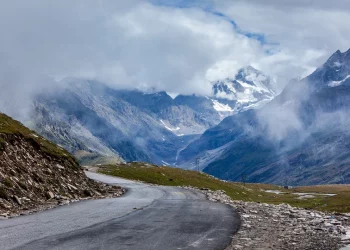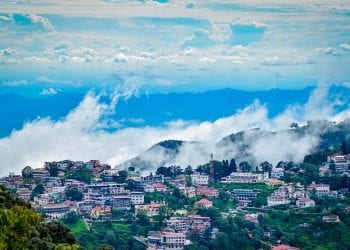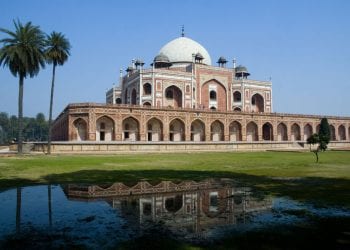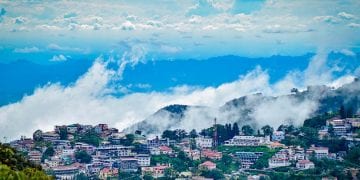Jhumri Telaiya- Tourist Destination at Koderma
Jhumri Telaiya is a city in the Koderma district of the Indian state of Jharkhand. It is nestled in the beautiful Damodar valley. The name Jhumri Telaiya is an amalgamation of two names- Jhumri, which was the name of a village in the valley, and Telaiya which is the Hindi word for a small lake. Jhumri is also local folk dance.
Jhumri Telaiya, during the British era, served as a major mica mining center. It was also called Abrak (the Hindi word for mica) Nagri (city). When the British were laying a railroad through Koderma in the 1890s, they discovered vast mica reserves in the region. They started mining activities soon after the discovery, and many mining houses were established. But this is not how Jhumri Telaiya got its legendary status. There is an interesting anecdote behind it, which we will share later in the article. But before that, let’s talk a little bit about the district Jhumri Telaiya, located in Koderma.
Koderma district is one of the twenty-four districts of the state of Jharkhand in India. It was created on 10 April 1994 and was carved out of the original Hazaribagh district. It is bordered by Nawada district of Bihar in the north, the Gaya district of Bihar on the west, the Giridih district of Jharkhand on the east, and the Hazaribagh district of Jharkhand on the south.
Koderma is blessed with an abundance of natural resources and is surrounded by lush green forests. There is a beautiful hill here called the Dhawajadhari Pahar, which is dedicated to Lord Shiva and many devotees gather here during Mahashivratri to pay respect to their beloved deity and pray for a miracle. Barsotti river flows through the district. The place houses another important hill called the Chanchal Dham, which is dedicated to Ma Chanchalni. Many devotees flock here on various festivals such as Durga Pooja, Ram Navami, akhari pooja, etc to worship Chanchlani Ma and ask for her blessings.
Koderma district is richly endowed with natural resources. At one time, Koderma was considered as the mica capital of India. The district has seen the rise and fall of many mica tycoons including some big names like the Bhadanis, Darukas, and Rajgarhias. Now, it is one of the fastest developing cities in Jharkhand.
Some of the major tourist attractions in Koderma include-
Tilaiya Dam
It is the first Dam and hydro -Electric power station constructed by Damodar Valley Corporation across Barakar River, in Koderma district. The dam is 1200 ft long and 99 ft high and looks quite beautiful against the backdrop of lush green forests and clear skies. Built with the main objective of controlling floods, the hydroelectric station produces 4MW of electricity. The picturesque settings of this place makes it a major tourist attraction. It is a great picnic spot for those who want to spend some quality time amidst nature.
Maa Chanchal Devi Mandir
Perched on a small hill at a distance of about 33km from the district headquarters lies the Maa Chanchal temple dedicated to Chanchalni Ma who is one of the forms of Goddess Durga. There is a cave in the hill that houses four big portraits of the deity. The entrance to the cave is quite narrow and may not be suited to some visitors who have difficulty in walking. Tuesdays and Saturdays are believed to be auspicious days here, and you will see a large number of devotees gathered here on these days. Arwa rice and mishri are given as offerings, and the use of sindoor or vermillion is prohibited.
Ghodsimar Dhaam
At about 70km from Koderma lies the Ghodsimar Dhaam, which is an archeologist’s delight. It lies dotted with religious sculptures and edifices that were excavated.
Jhumri Telaiya
Now, let’s take you to Jhumri Telaiya, probably the most popular town in this region. But do you know why Jhumri Telaiya gained this cult-like status? Probably some of you might have an idea. Originally a little-known town, Jhumri Telaiya became famous in the 1950s owing to its connection with radio channels Radio Ceylon and Vividh Bharati (a nationally broadcast radio service of the All India Radio). At a time when television channels and FM stations had not yet come to India, the All India Radio was a significant national phenomenon. People used to tune in to the radio to listen to the news or their favorite songs and the largest number of requests for film songs addressed to the channel came from Jhumri Telaiya.
The story of Jhumri Telaiya’s fondness for music is tied to its economic history and mica. It is quite surprising but true. After the British discovered vast mica deposits in the region in 1890, a railroad was laid through erstwhile south Bihar (now Jharkhand).
Mining activities started soon after the discovery and trains were devoted just to carry mica. The mineral was taken from the mines to the dockyards of Kolkata, erstwhile Calcutta, from where it was exported to Japan. It was a lucrative trade. The Mica tycoons of Jhumri Telaiya, Chattu Ram Bhadani, and Horil Ram Bhadani controlled nearly 1,000 mines in the region. These rich and influential businessmen spearheaded the transformation of Jhumri Telaiya from an obscure and sleepy village into a mining powerhouse.
The town saw the construction of huge mansions. Arabian thoroughbreds were imported and luxury cars like Mercedes and Porsche became commonplace there. The famous Bhadani family even got Suraiya ( a well-known Bollywood playback singer) from Bombay to perform at a concert there.
Then came the roaring 50s. Television had not found a place in many Indian households and people were attached to the radio. Radios then became quite significant. Sending song requests on postcards to these shows was slowly becoming a popular pastime in many Indian villages. A major mining giant from Jhumri Telaiya, Rameshwar Prasad Barnwal, decided to join the trend.
Barnwal started mailing postcards with farmaishein (song requests) to Radio Ceylon daily. The first broadcasting station of South Asia, Radio Ceylon’s popularity had soared after B.V. Kesakar, the then Information and Broadcasting Minister, banned film music on All India Radio (AIR) in 1952.
Radio Ceylon’s most popular program then was Ameen Sayani’s Bianca Geetmala. In this program, the host played choicest Hindi songs that were mailed to him via post. Because Barnwal was a regular mailer, his name started appearing regularly in the requests announced in the show. This motivated other residents of Jhumri Telaiya to send in their requests as well. Two other prominent residents of Jhumri Telaiya namely Ganga Prasad Magadhiya and Nand Lal Sinha decided to be a part of Barnwal’s postcard-sending spree.
The trio started some sort of a song revolution in the town. Now everyone wanted their name mentioned on the radio. As this fad took over the entire town, radio lovers in Jhumri Telaiya formed a little radio listener’s club and started competing among themselves to send out most song requests in a day or month.
People say that the postmen during that time were bribed by residents not to post their competitor’s letter so that they could have a greater possibility of their names being mentioned on the radio.
In 1957, when All India Radio resumed broadcasting old Hindi Songs on their Vividh Bharti program, they received hundreds of requests from this quaint town. To save labor, the channel printed the request format on postcards where the person was only required to fill song details by hand.
As the residents of Jhumri Telaiya took this leisurely pastime to a different level of passion, the name of the town became famous among the listeners of Vividh Bharti. At that time almost every person in every nook and corner of India was hooked on to the radio. But thanks to the town’s unusual name and the mammoth number of requests that they sent, many listeners thought that it was a fictitious place.
Gradually, the name became a sort of an urban legend. Many Jhumri Telaiya clubs began to spring up in different states. Some villages including Nanded, Rajnand Gaon, Naya, and Purana Jalna, also began sending postcards in large numbers to counter the increasing popularity of Jhumri Telaiya.
Jhumri Telaiya’s song request fad continued till the ’80s when television began gaining popularity, and postal costs increased. With so many video options available, the residents (especially the young ones) no longer needed to tune in to the radio to listen to their favorite songs.
Today, the town does not have the same radio-fad anymore. However, a few radio loyalists still write letters to AIR’s music programs.
The radio has lost its appeal, but the charm of this unique town refuses to die down. It is also known for its delicious Kalakand. Kalakand originated in Alwar, Rajasthan, but the halwais of Jhumri Telaiya improvised the sweet and made it softer and moist. It is believed that kalakand found its way to Jhumri Telaiya through the Bhatia brothers who came to the town in the late 50s. The talented sweetmeat makers of Jhumri Telaiya improvised the sweet and tweaked it a bit and it became an instant hit. Over time, Jhumri Telaiya became a delightful gastronomical destination. Foodies from all over the country visit Jhumri Telaiya just to taste this sweet specialty.
Jhumri Telaiya is unlike any other town you would have visited. It is a town that transcends the boundary of reality and fables and takes you to a time when life was simpler.
P.s. You might like these related resources
- Sher Shah suri tomb: In Sasaram Town
- 8 Amazing Places to Visit in Ranchi to Enjoy Your Vacation Trip!
- Make your Trip More Interesting by Visiting the Places in Jamshedpur!
Recent Posts
Top Picks
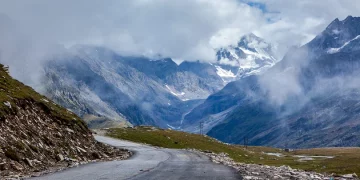
- OYO
 15 April, 2024
15 April, 2024 - Cultural Tour

- OYO
 15 April, 2024
15 April, 2024 - Cultural Tour

- OYO
 15 April, 2024
15 April, 2024 - Cultural Tour

- OYO
 15 April, 2024
15 April, 2024 - Cultural Tour

- OYO
 15 April, 2024
15 April, 2024 - Cultural Tour

Please rotate your device
Please go back to portrait mode for the best experience



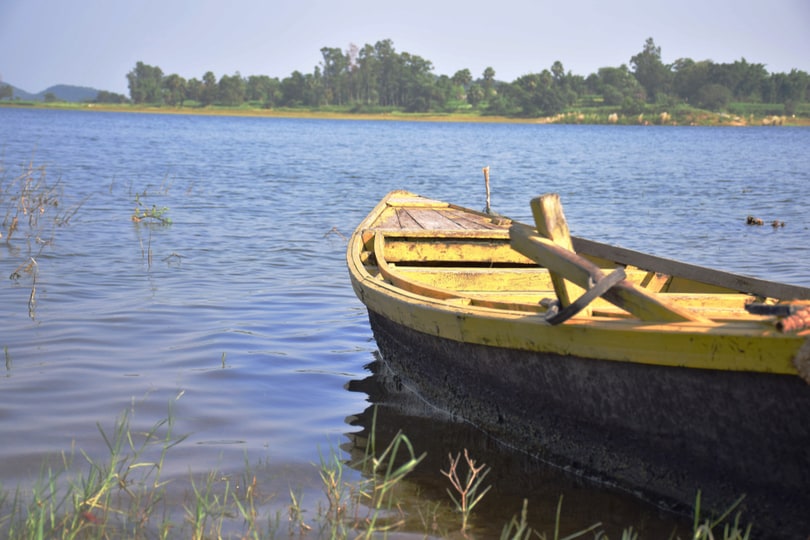

 April 15, 2024
April 15, 2024 